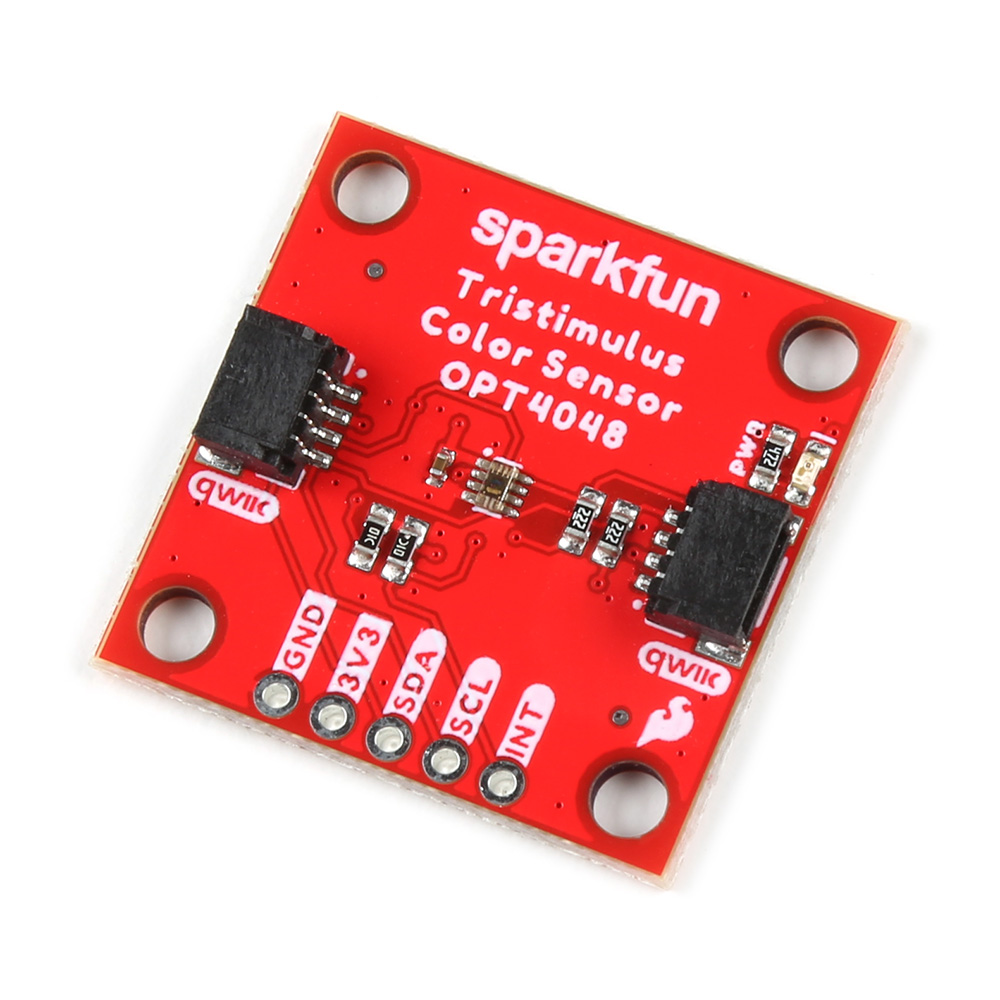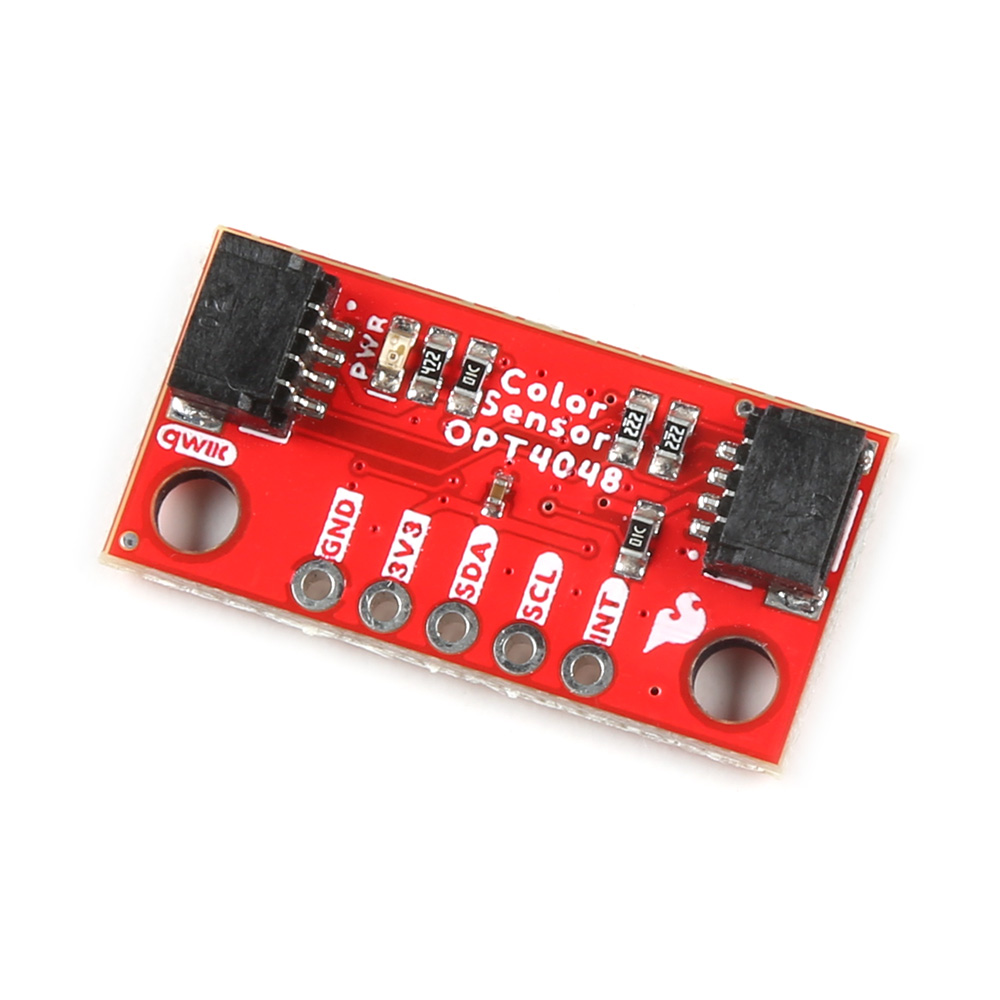Python module for the following:
 |
 |
| SparkFun Tristimulus Color Sensor - OPT4048DTSR (Qwiic) | SparkFun Mini Tristimulus Color Sensor - OPT4048DTSR (Qwiic) |
This python package is a port of the existing SparkFun OPT4048 Arduino Library
This package can be used in conjunction with the overall SparkFun Qwiic Python Package
New to qwiic? Take a look at the entire SparkFun qwiic ecosystem.
Your system might need modification. See this note.
The qwiic Buzzer Python package current supports the following platforms:
This driver package depends on the qwiic I2C driver: Qwiic_I2C_Py
The SparkFun Qwiic Trisitumuls Color Sensor module documentation is hosted at ReadTheDocs
This repository is hosted on PyPi as the sparkfun_opt4048_tristimulus_color_sensor package. On systems that support PyPi installation via pip, this library is installed using the following commands
For all users (note: the user must have sudo privileges):
sudo pip install sparkfun_opt4048_tristiumuls_color_sensorFor the current user:
pip install sparkfun_opt4048_tristiumuls_color_sensorTo install, make sure the setuptools package is installed on the system.
Direct installation at the command line:
python setup.py installTo build a package for use with pip:
python setup.py sdistA package file is built and placed in a subdirectory called dist. This package file can be installed using pip.
cd dist
pip install sparkfun_opt4048_tristimulus_color_sensor-<version>.tar.gzFor this sensor to work on the Raspberry Pi, I2C clock stretching must be enabled.
To do this:
- Login as root to the target Raspberry Pi
- Open the file /boot/config.txt in your favorite editor (vi, nano ...etc)
- Scroll down until the block that contains the following is found:
dtparam=i2c_arm=on
dtparam=i2s=on
dtparam=spi=on- Add the following line:
# Enable I2C clock stretching
dtparam=i2c_arm_baudrate=10000- Save the file
- Reboot the raspberry pi
See the examples directory for more detailed use examples.
import qwiic_opt4048
import sys
import time
def runExample():
print("\nExample 1 - Basic Settings\n")
# Create instance of device
myColor = qwiic_opt4048.QwOpt4048()
# Check if it's connected
if myColor.is_connected() is False:
print(
"The device isn't connected to the system. Please check your connection",
file=sys.stderr,
)
return
# Initialize the device
if myColor.begin() is False:
print(
"Could not communicate with the Sensor, is the correct address selected?",
file=sys.stderr,
)
return
myColor.set_basic_setup()
while True:
print("CIEx: %f, CIEy: %f" % (myColor.get_CIEx(), myColor.get_CIEy()))
# Delay time is set to the conversion time * number of channels
# You need three channels for color sensing @ 200ms conversion time = 600ms.
time.sleep(0.6)
if __name__ == "__main__":
try:
runExample()
except (KeyboardInterrupt, SystemExit) as exErr:
print("\nEnding Example")
sys.exit(0)





